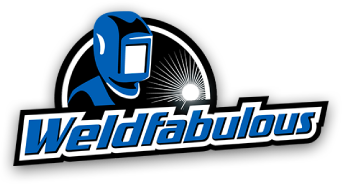
How to Maintain & Repair Welding Equipment
Posted by Weldfabulous on Jan 3rd 2025
Welding is more than just sparks flying and metal melting — it’s an art, a trade, and a science rolled into one. But every artist needs well-kept tools, and for welders, maintaining and repairing your equipment is the backbone of safe, efficient, and high-quality work.
Whether you’re a seasoned professional or a DIY weekend warrior, keeping your welding equipment in peak condition ensures precision, extends its lifespan, and saves you from unexpected downtime. Let’s dive into the essential maintenance and repair practices that will keep your welding gear humming along, project after project.
What Are the Common Maintenance Tasks for Welding Machines?
Routine maintenance is the secret sauce for dependable welding machines. Here are the key tasks to prioritize:
- Inspect and Clean Components Regularly: Dust, dirt, and debris can wreak havoc on your machine. Use compressed air to clean vents and internal components, ensuring the airflow remains unobstructed.
- Check Electrical Connections: Loose or corroded connections can lead to inconsistent welds. Tighten and inspect all connections and replace any damaged wires or terminals.
- Replace Consumables: Consumables like contact tips, nozzles, and gas diffusers wear out over time. To maintain weld quality, regularly check for signs of wear and tear and replace them as needed.
- Monitor Coolant Levels: To avoid overheating, ensure that coolant levels are adequate for water-cooled welding machines and use the recommended type.
How to Troubleshoot & Fix Welding Machine Issues
Even the best-maintained equipment can encounter problems. Knowing how to troubleshoot common problems can prevent trips to the repair shop.
- Problem: Inconsistent Arc or Poor Weld Quality
- Solution: Check for worn-out contact tips, loose connections, or contaminated filler materials. Cleaning or replacing these components often resolves the issue.
- Problem: Overheating Machine
- Solution: Ensure that the cooling system is functioning properly. Clean clogged vents, verify coolant levels, and avoid overloading the machine.
- Problem: Power Fluctuations
- Solution: Inspect the power source and cables for damage or loose connections. Using a voltage stabilizer may also help.
- Problem: Wire Feed Issues in MIG Welders
- Solution: To ensure smooth feeding, adjust the tension on the wire feed system, replace kinked wires, or clean the drive rolls.
Best Practices for Extending the Life of Welding Equipment
Protecting your investment doesn’t have to be complicated. Adopt these habits to maximize the lifespan of your welding gear:
- Store Equipment Properly: Keep machines in a clean, dry area to avoid moisture-related damage. Cover them when not in use to protect against dust and debris.
- Use High-Quality Consumables: Cheap consumables may seem like a bargain, but they can negatively affect performance and wear out faster.
- Follow Manufacturer Guidelines: Always use the recommended settings, maintenance schedules, and replacement parts for your specific machine.
- Train Yourself or Your Team: Proper usage minimizes the risk of accidental damage or undue wear.
How to Find & Replace Worn-Out Parts in Welding Machines
Replacing worn-out parts isn’t just about maintaining weld quality; it’s also about safety. Here's how to get it right:
- Inspect Components Regularly: Periodically examine parts like drive rolls, hoses, and O-rings for signs of wear.
- Keep a Spare Parts Kit: A kit with common replacement parts ensures you’re ready to make quick fixes and avoid downtime.
- Order from Trusted Suppliers: Use certified parts from reputable suppliers to guarantee compatibility and durability.
- Follow Installation Instructions: Refer to your machine’s manual to correctly install new parts and calibrate settings.
What Are the Signs That It’s Time to Upgrade Your Welding Equipment?
Even with diligent maintenance, welding machines don’t last forever. Here are some indicators that it might be time for an upgrade:
- Frequent Breakdowns: If repairs become regular, investing in a new machine might save you money in the long run.
- Outdated Technology: Modern welding machines offer features like digital controls, increased efficiency, and multi-process capabilities that older models lack.
- Inconsistent Performance: If your machine struggles to maintain quality or keep up with your workload, it’s likely nearing the end of its useful life.
- Safety Concerns: Newer models often have enhanced safety features, making them a worthwhile upgrade.
Wrap It Up With Weldfabulous
Keeping your welding equipment in tip-top shape doesn’t have to feel like a chore, and it’s a surefire way to extend its life, maintain safety, and deliver professional-grade results. If you’re looking for top-notch welding supplies, accessories, or expert advice, Weldfabulous has you covered.
From premium consumables to state-of-the-art welding machines, we’re your one-stop shop for all things welding. Call our team today at 507-494-5169, and let us help you achieve your welding goals with the best tools and expertise in the industry!
